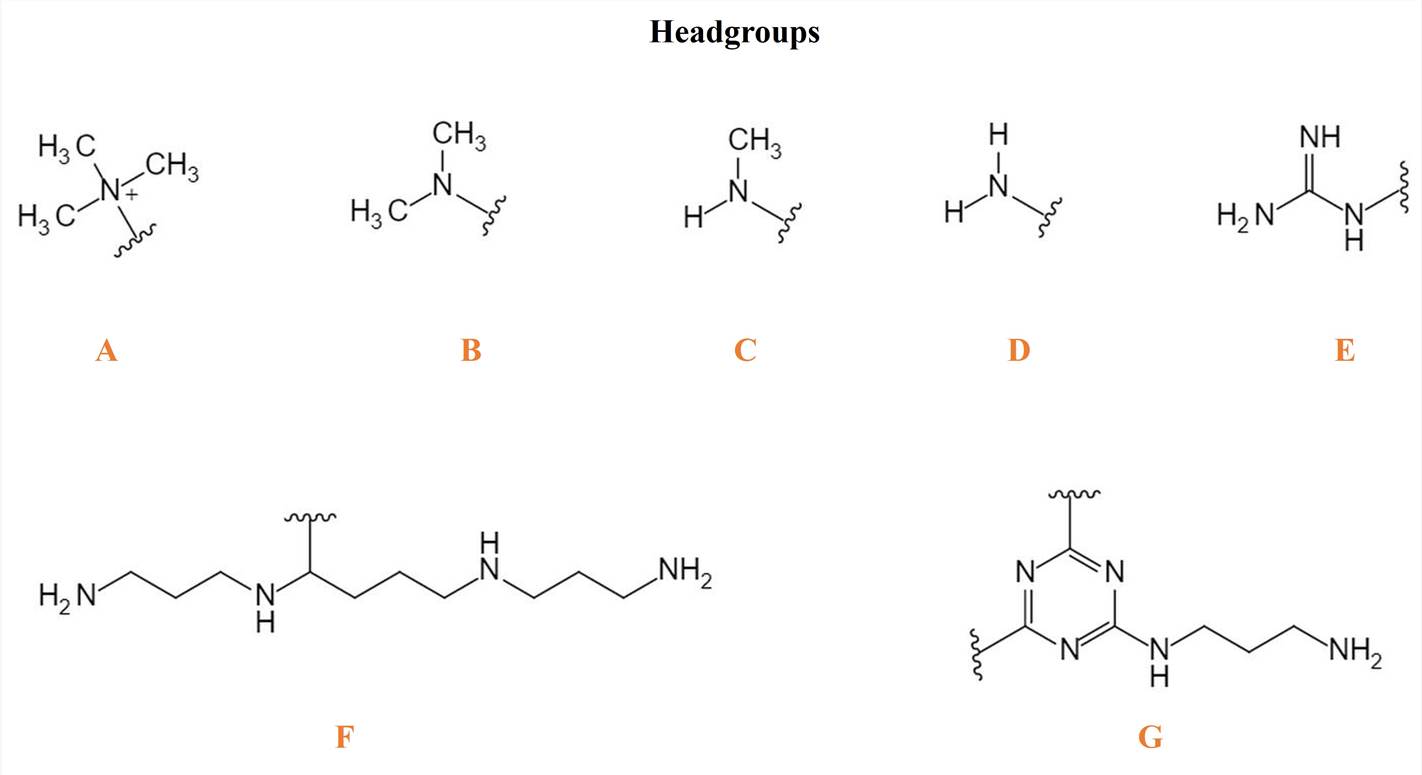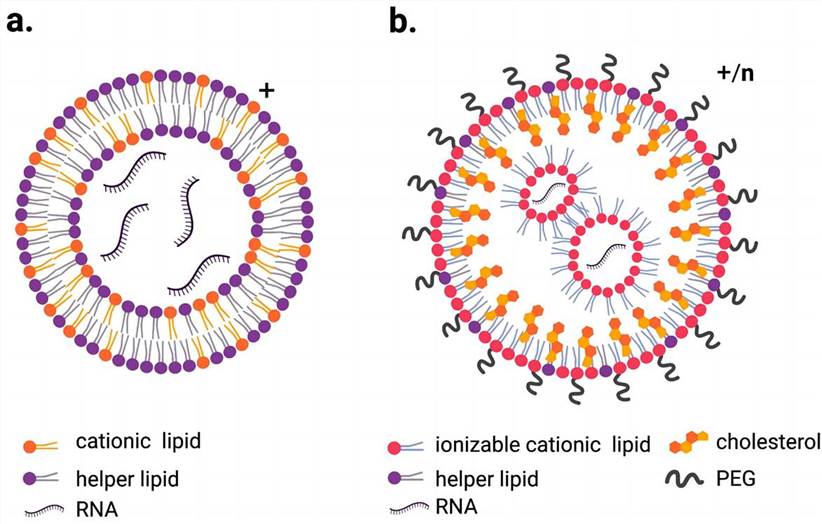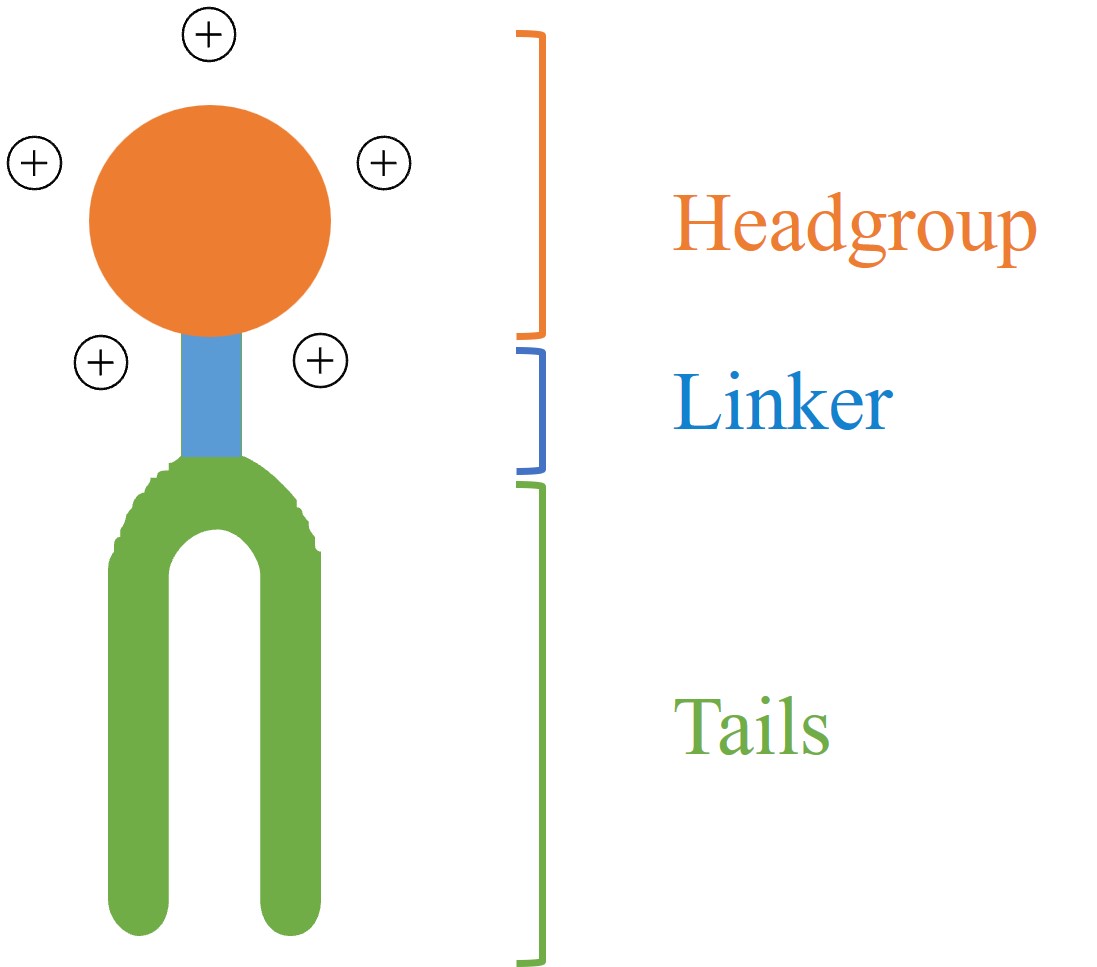Cationic Lipids Customization
InquiryWith over 15 years' experience in lipid particle formulation and medicinal chemistry, CD Formulation has designed a comprehensive library of novel cationic lipids tailored to specific cargo and functional needs. Our lipids can be precisely engineered to optimize transfection efficiency and safety profiles based on factors such as head group chemistry, linker composition and acyl chain properties.
What are Cationic Lipids?
Cationic lipids are a class of synthetic lipid molecules that contain a positively charged head group, such as a tertiary or quaternary amine, attached via a linker to hydrophobic tails resembling natural fatty acids or cholesterol. The cationic head confers a positive overall charge that allows the lipid to electrostatically interact with and condense negatively charged polynucleotides like DNA, mRNA, siRNA or miRNAs into nanoparticle complexes. Upon contact with cells, cationic lipids facilitate the cellular uptake of these particles via endocytosis.
What Can We Do for Cationic Lipid Development?
Our scientists employ rational design and high-throughput synthesis to generate focused libraries of novel cationic lipids. We modify head groups, linkers and acyl chains to optimize biophysical properties.
Headgroups/Linkers/ Tails that we often use when designing cationic lipids:

|
(A) Quaternary ammonium salt |
(B) Tertiary amine |
(C) Secondary amine |
(D) Primary amine |
| (E) Polyamine |
(F) Guanidinium group |
(G) Melamine group |
|
Linkers: ethers, esters, carbamates, amides, miscellaneous
Tails: aliphatic chains, cyclic (steroid-based) domains
- Structure-Activity Analysis
We customize an automated screening system for lipid groups, rigorously evaluate the impact of molecular structure on key functions (such as transfection efficiency, cytotoxicity, and pharmacokinetics), and continuously optimize lipid structures through structure-activity relationship analysis.
- Lipid Formulation Customization
We work closely with our customers to develop custom lipid formulations based on their specific requirements. We can adjust lipid ratios, help customers select helper lipids or other additives, and optimize formulations to achieve desired properties and functions.
- Biophysical Characterization
State-of-the-art techniques such as DLS, TEM, NMR and ITC provide deep insights into customized lipid-cargo interactions, complex self-assembly and stability.
Applications of Our Customized Cationic Lipids
Our customized cationic lipids robustly transport genetic payloads for gene therapy. DNA and RNA cargoes such as mRNA, siRNA and CRISPR/Cas are safely and efficiently transported into cells, enabling controlled expression, correction of mutations, and precision editing of the genome.
We tailor lipids to transfect a wide range of cells, including difficult-to-transfect primary cells and stem cells. Researchers leverage our formulations to advance cellular therapies, tissue engineering, and 3D biological modeling.
Through optimized nucleic acid transport, our lipids enable fundamental investigations and preclinical disease modeling crucial, supporting studies of cellular processes, molecular mechanisms, and disease models.
By incorporating biomarkers and imaging agents, our transporters enable combining therapeutics and diagnostics into multifunctional nanosystems. This facilitates simultaneous targeting, treatment monitoring, and personalized therapeutic evaluation.
 RNA delivery with LNPs (Żak M.M.; Zangi L. 2021)
RNA delivery with LNPs (Żak M.M.; Zangi L. 2021)
Why Choose Our Cationic Lipids Customization Services?
- We provide customized cationic lipids designed specifically to meet your unique requirements, ensuring optimal performance and compatibility for your applications.
- Our customized cationic lipids improve the efficiency of gene and drug delivery systems, enhancing cellular uptake, endosomal escape, and transfection or delivery efficacy.
- We offer a wide range of customization options, including lipid composition, charge density, and functional modifications.
Whether you need help increasing transfection activity, improving biodistribution properties or developing scalable processes, our multidisciplinary experts are ready to collaborate and help unlock your therapeutic potential. Contact us today to explore the possibilities and discover how our expertise can help you achieve your research and development goals!
References
- Ponti F.; et al. Cationic lipids for gene delivery: many players, one goal. Chem Phys Lipids. 2021, 235:105032.
- Sun D.; Lu Z.R. Structure and function of cationic and ionizable lipids for nucleic acid delivery. Pharm Res. 2023, 40(1):27-46.
- Żak M.M.; Zangi L. Lipid Nanoparticles for organ-specific mRNA therapeutic delivery. Pharmaceutics. 2021, 13(10):1675.
Related Services




 RNA delivery with LNPs (Żak M.M.; Zangi L. 2021)
RNA delivery with LNPs (Żak M.M.; Zangi L. 2021)